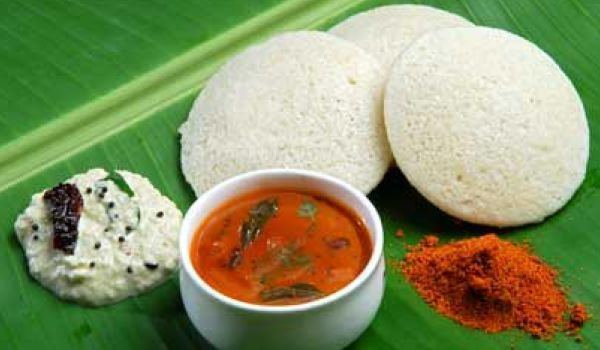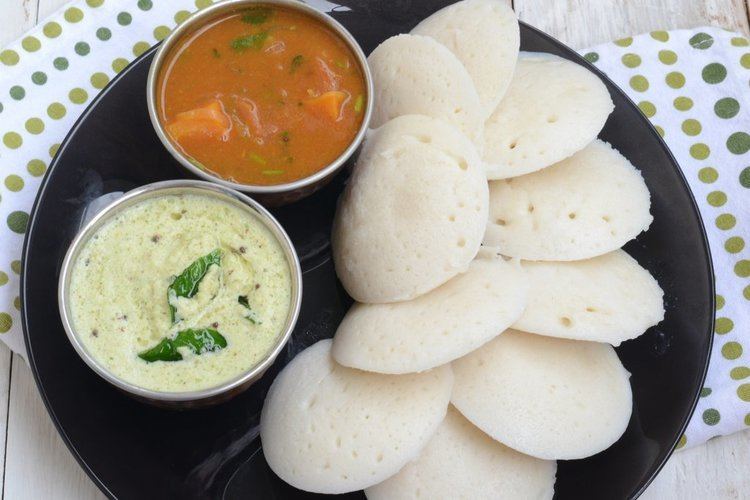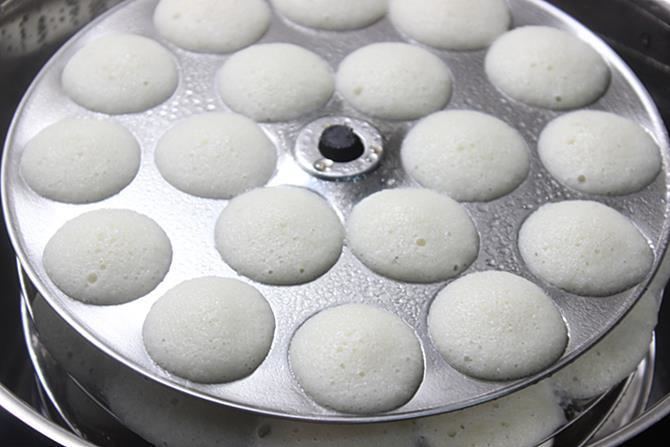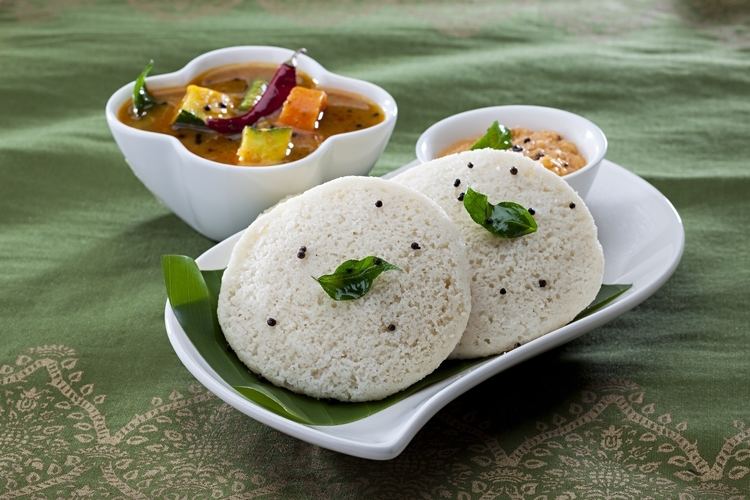Alternative names Idly Course Breakfast Serving temperature Hot | ||
 | ||
Similar Dosa, Sambar, Vada, upma, Rice | ||
Idli batter at home idli batter for soft idli
Idli /ɪdliː/) is a traditional breakfast in South Indian households. Idli is a savoury cake that is popular throughout India and neighbouring countries like Sri Lanka. The cakes are made by steaming a batter consisting of fermented black lentils (de-husked) and rice. The fermentation process breaks down the starches so that they are more readily metabolized by the body.
Contents
- Idli batter at home idli batter for soft idli
- Soft and spongy idli recipe
- History
- Preparation
- Serving
- Variations
- References

A variant of Idli known as sanna is very popular amongst the Goans and other Konkani people. Another variant known as Enduri Pitha is very popular in Odisha.

Soft and spongy idli recipe
History

A precursor of the modern idli is mentioned in several ancient Indian works. Vaddaradhane, a 920 CE Kannada language work by Shivakotiacharya mentions "iddalige", prepared only from an black gram (urad dal) batter. Chavundaraya II, the author of the earliest available Kannada encyclopaedia, Lokopakara (c. 1025 CE), describes the preparation of this food by soaking black gram in buttermilk, ground to a fine paste, and mixed with the clear water of curd and spices. The Western Chalukya king and scholar Someshwara III, reigning in the area now called Karnataka, included an idli recipe in his encyclopedia, Manasollasa (1130 CE). This Sanskrit-language work describes the food as iḍḍarikā. The food prepared using this recipe is now called uddina idli in Karnataka.

The recipe mentioned in these ancient Indian works leaves out three key aspects of the modern idli recipe: the use of rice (not just urad dal), the long fermentation of the mix, and the steaming for fluffiness. The references to the modern recipe appear in the Indian works only after 1250 CE. Food historian K. T. Achaya speculates that the modern idli recipe might have originated in present-day Indonesia, which has a long tradition of fermented food. According to him, the cooks employed by the Hindu kings of the Indianised kingdoms might have invented the steamed idli there, and brought the recipe back to India during 800-1200 CE. Achaya mentioned an Indonesian dish called "kedli", which according to him, was like an idli. However, Janaki Lenin was unable to find any recipe for an Indonesian dish by this name.

The Gujarati work Varanaka Samuchaya (1520 CE) mentions idli as idari, and also mentions its local adaption idada (a non-fermented version of dhokla). The earliest extant Tamil work to mention idli (as itali) is Maccapuranam, dated to the 17th century.
Preparation

To make Idli, four parts uncooked rice (Idli rice or parboiled rice) to one part whole white lentil (urad dal, vigna mungo) are soaked separately for at least four hours to six hours or overnight. Optionally spices such as fenugreek seeds can be added at the time of soaking for additional flavor. Once done soaking, the lentils are ground to a fine paste and the rice is separately coarsely ground, then they are combined. Next, the mixture is left to ferment overnight during which its volume will more than double. After fermentation some of the batter may be kept as a starter culture for the next batch. The finished idli batter is put into greased moulds of an idli tray or "tree" for steaming. The perforated molds allow the idlis to be cooked evenly. The tree holds the trays above the level of boiling water in a pot, and the pot is covered until the idlis are done (about 10–25 minutes, depending on size). A more traditional method is to use leaves instead of molds.
Serving
Since plain idlis are mild in taste, a condiment is considered essential. Idlis are often served with sambar but this varies greatly by region and personal taste. Idlis are also frequently served with chutnies (coconut based), kaara chutney (onion based) or Spicy Fish Curries. The dry spice mixture podi is convenient while traveling.
Variations
With the emigration of south Indians and Sri Lankans throughout the region and world, many variations on idli have been created in addition to the almost countless local variations. Hard-to-get ingredients and differing cooking customs have required changes in both ingredients and methods. Parboiled rice can reduce the soaking time considerably. Store-bought ground rice or cream of rice may also be used. Similarly, semolina or cream of wheat may be used for preparing rava idli (wheat idli). Yogurt may be added to provide the sour flavor for unfermented batters. Prepackaged mixes allow for almost instant idlis.
In addition to or instead of fenugreek other spices may be used such as such as mustard seeds, chile peppers, cumin, coriander, ginger, etc. Sugar may be added to make them sweet instead of savory. Idli may also be stuffed with a filling of potato, beans, carrot and masala. Leftover idlis can be cut-up and sautéed for a dish called idli upma. Rather than a stovetop steamer, microwave and automatic electric idli steamers are available with convenient non-stick coating. Batter preparation using a manual rocking rock grinder can be replaced by electric grinders or blenders (mixies). Many restaurants have also come up with fusion recipes of Idlis as idly manchurian, idly fry, chilly idly and a lot of different ideas.
